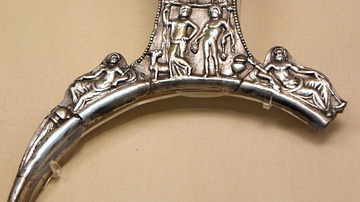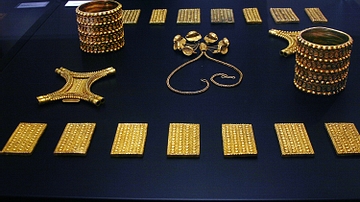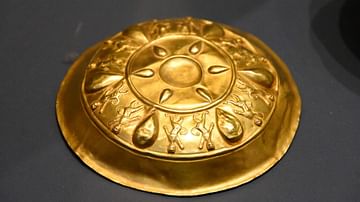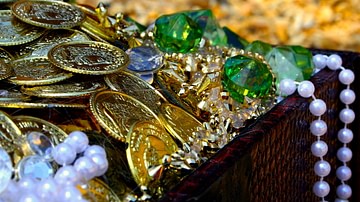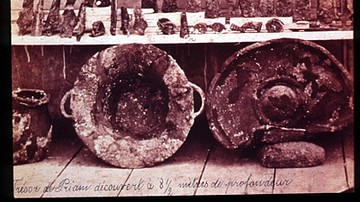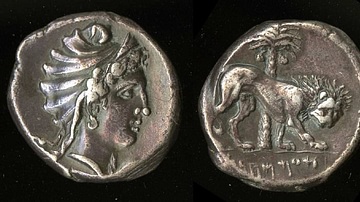Illustration
These spoons are an unusual shape for the Late Roman Period. Their decoration, inlaid with niello (a black metal alloy), demonstrates the fine craftsmanship represented by the Carthage Treasure. The Cross symbol suggests that the owners were Christians. The frog design on the shallow bowl (patera) may also have had a Christian significance. In pre-Christian Egypt, frogs symbolized the coming of flood and fertility to the earth. For this reason, Christians later associated frogs with resurrection. 300s-400s CE. From the Hill of St. Louis, Tunisia. The Carthage Treasure comprises 31 pieces of jewellery and silver tableware, dating from around 400 CE. The treasure was found in Carthage, modern-day Tunisia. It is thought to have been buried for safekeeping by the prominent Cresconii family at a time of crisis, possibly when the city was attacked by the Germanic Vandal King Gaiseric in 439 CE. Bequeathed by Sir Augustus Wollaston Franks. (The British Museum, London).
Cite This Work
APA Style
Amin, O. S. M. (2016, October 05). Spoons & Patera from the Carthage Treasure. World History Encyclopedia. Retrieved from https://www.worldhistory.org/image/5754/spoons--patera-from-the-carthage-treasure/
Chicago Style
Amin, Osama Shukir Muhammed. "Spoons & Patera from the Carthage Treasure." World History Encyclopedia. Last modified October 05, 2016. https://www.worldhistory.org/image/5754/spoons--patera-from-the-carthage-treasure/.
MLA Style
Amin, Osama Shukir Muhammed. "Spoons & Patera from the Carthage Treasure." World History Encyclopedia. World History Encyclopedia, 05 Oct 2016. Web. 17 Apr 2024.


